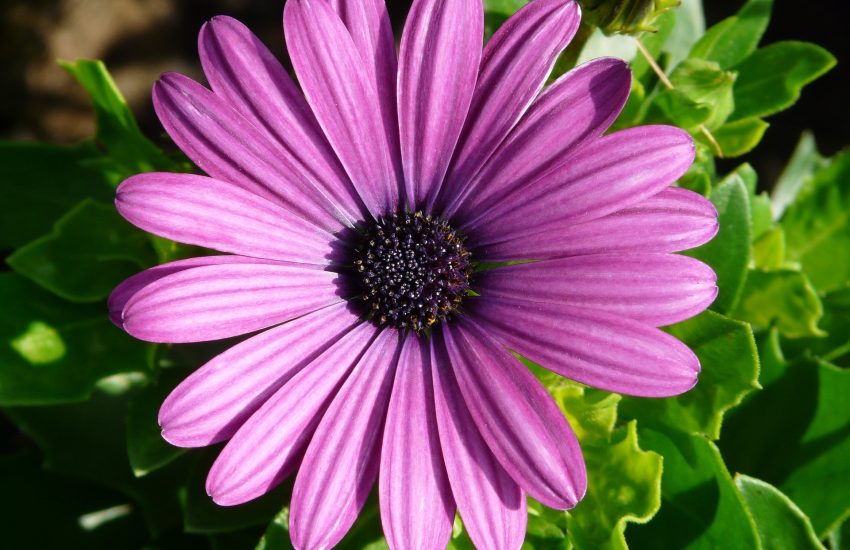Flowering Vines That Will Do Best in Your Ohio Garden
Flowering vines are a great addition to any landscape. You can use them to add color and beauty to a space, provide privacy for outdoor spaces, and even create a focal point in your yard. Many flowering vines are available, and it can be hard to choose which one to grow in Ohio. Here are some of the best flowering vines that you can grow in Ohio.
Clematis
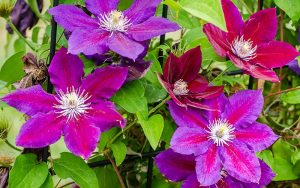
Clematis is perhaps one of the most popular flowering vines for many reasons:
- It’s readily available at most nurseries and garden centers throughout Ohio.
- It’s relatively easy to grow and maintain.
- It produces large, fragrant flowers that draw attention from far away!
Clematis also has excellent disease resistance as well as pest resistance. Wide varieties of clematis are available from nurseries in Ohio, but one of the most common types is “Clematis paniculata.” This variety produces long-lasting flowers on a green stem that reaches up to 10 feet tall.
Morning Glory
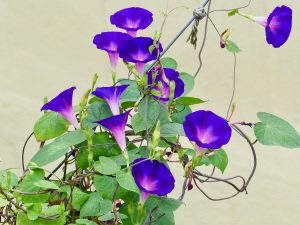
Mornings Glory is a beautiful vine with small, hanging flowers that are purple-pink. This vine can grow over 10 feet long and has a trailing habit. Morning Glory grows on trees, bushes, fences, and walls. The flowers grow in clusters of two to four but are not very showy. Therefore, these vines need to be supported by trellising as they climb over tall structures.
Morning glories produce seed pods that look like blackberries or blueberries when they’re ripe. You can harvest these seeds from the vine by cutting them back to near ground level and shaking the seeds into a container.
Climbing Hydrangea
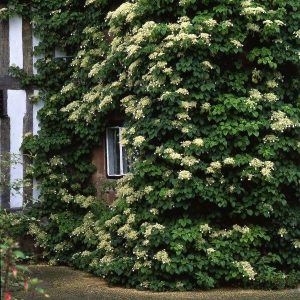
Hydrangeas are one of the most popular flowering vines in Ohio. They are hard to kill and can grow as high as 50 feet. They are easy to grow but require a lot of sun and water.
The best time to plant climbing hydrangeas is spring when their roots have begun growing. Plant them in full sun, about 6–10 inches apart each way. If you want to train your hydrangeas up a trellis or fence, use a loose stone or gravel base between the ground and trellis wire so the plant’s roots can grow through it instead of around it.
When planting, dig a hole about 8 inches deep and about twice as wide as the root ball of your plant. Place your plant in the hole and fill it with soil around its edges so that only 1 inch remains above ground level on all sides. Fill with mulch around its base or place it in a container if you want to keep it indoors over winter.
Passion Flower
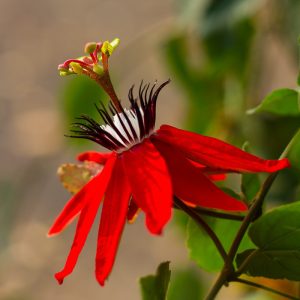
Passionflower can easily grow from seed or cuttings but needs full sun to bloom well. It likes moist soil and will tolerate poor soils as long as it is given plenty of water throughout the growing season. Passion flowers require a long growing season to flower properly, so you should plant them in spring or summer so they have time to mature before your first frost date.
Dutchman’s Pipe
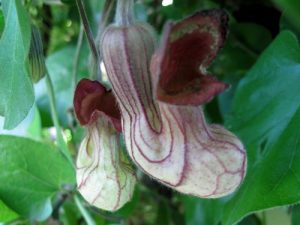
Dutchman’s Pipe is a flowering vine that grows 8 to 15 feet tall with numerous dark green leaves. The flowers are heart-shaped and yellowish-green. The plant grows in the U.S. Department of Agriculture plant hardiness zones 5 through 9, but it prefers full sun, sandy loam soil, and a well-drained location with plenty of water during the growing season.
This plant is best propagated by root division in spring after the ground has thawed but before it becomes too hot during the summer months. Dutchman’s Pipe spreads easily by self-seeding when left unchecked, so gardeners may wish to remove any unwanted plants from their yards.
Honeysuckle
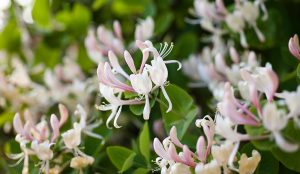
Honeysuckle can be a great choice for hardier Ohio gardens, especially if you want to create a more formal look. The flowers may not be as long-lasting as some other vines, but they’re fragrant and fun to watch bloom. Honeysuckle is commonly found along roadsides and in woods throughout Ohio.
Honeysuckle is not difficult to grow, but it does require regular watering and a sunny location with good airflow for optimal growth. In addition, the vine prefers well-drained soil rich in organic matter and needs regular feeding with a balanced fertilizer that contains nitrogen for best results. Honeysuckle will also benefit from being pruned back every spring to promote new growth and encourage the plant to flower again next summer.
Trumpet Vine
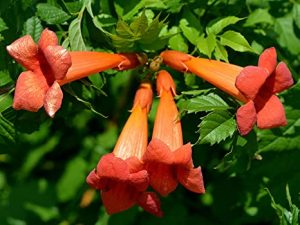
Trumpet vine is a fast-growing, hardy vine that can grow up to 30 feet tall. This vine is also known as trumpet tree, trumpet creeper, and trumpet flower. Trumpet vine has large black shiny leaves that resemble a trumpet, and they grow in clusters around the stem. The white or light pink flowers grow in clusters along the plant’s branches.
The trumpet vine can be grown in most areas of Ohio. However, it does best when planted outdoors during the spring or summer. It thrives best in full sun but will tolerate partial shade conditions.
Trumpet vine is easy to care for once it has been established. It requires little attention once it reaches maturity after about three years from planting time. If you choose not to prune your trumpet vines yearly but rather let them grow wild all year long, then you should expect about 1-3-foot growth per season for each plant over time.
Virginia Creeper
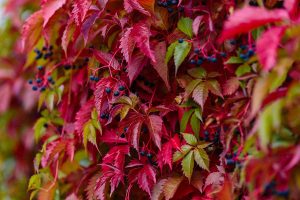
Virginia Creeper is a fast-growing vine with long, trailing stems that can grow up to 7 feet long. Its vines are covered with small, oval-shaped leaves and come in various colors, from light green to dark green.
The flowers form clusters at the ends of the stems and resemble tiny lanterns. Virginia Creeper can be grown in full sun or shade and prefers well-drained soil with a pH between 6 and 8. The Virginia Creeper is an adaptable plant that can be planted almost anywhere, even under trees or in pots on patios. It will also grow well indoors if you regularly give it enough light and water.
American Wisteria

The American wisteria is a very popular vine for gardeners in Ohio. The vines can grow up to 30 feet long, so they are best suited to outdoor gardens or large yards where they can be pruned back to keep them in check. In addition, the American wisteria is cold and hardy and thrives outdoors under full sun or partial shade.
Roses
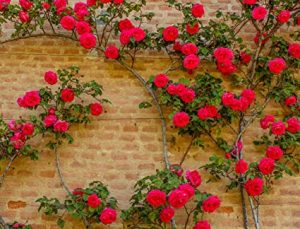
Roses are great for Ohio because they are hardy and perform well in many different soil types. In addition, roses can grow quite large and produce large flowers, which means you can have a lot of blooms without having to deal with a lot of maintenance.
Roses typically require full sun and well-drained soil. They will do best with at least one inch of water per week during the growing season, but if you want even more flowers, try soaking the soil once a month during your plant’s active growth phase.
To keep your roses healthy and thriving, feed them every six weeks with an organic liquid fertilizer diluted by half an inch of water.
Boston Ivy

The Boston Ivy is a trailing vine that forms dense, spreading mats. It grows best in moist soil and tolerates shade. This vine can climb up trees and even onto the sides of buildings, making it an excellent choice for climbing up trees.
The Boston Ivy produces many small white flowers on short stems in the spring. These flowers attract butterflies and bees while at the same time growing into a thick mat that can cover fences and other structures. The vine can grow up to 50 feet tall.
Factors to Consider When Choosing Flowering Vines to Grow in Ohio
Hardiness
The first thing to consider when choosing flowering plants is their hardiness. The best flowering vines are easy to grow and do not require winter dormancy.
Hardy vine plants will tolerate most of the climate conditions in Ohio. However, vines that can tolerate wet soil can be planted in areas with a lot of rainfall. These vines should be planted in areas with well-drained soil, such as along sidewalks.
Size
Vine size is a factor that you should consider when choosing flowering vines. The larger the vine, the harder it will be to grow and care for it. In addition, a large vine can require more space than you have available in your yard or garden, so if you have small space to work with, choose smaller vines.
It would help if you also consider where to place your vine. For example, if you are hoping for vines to cover an entire wall or fence, you need something that can grow quickly and cover large areas of the ground rather than spread out over time.
Resistance to Pests and Diseases
Pests can be a problem when growing flowering vines in Ohio. The most common pests are powdery mildew, caterpillars, and aphids. You can control these with appropriate pesticides or prevent them from getting started by growing plants with strong root systems that can withstand pest attacks.
Soil Requirements
The type of soil you have in your yard or garden will affect the plants you can grow. If you have clay soil, it is best to stick to plants adapted to that type of soil, as they will grow better. If you have acidic or alkaline soil, it is best not to plant certain plants because they will not thrive in those conditions.
Fertilizer Requirements
The type of fertilizer that you use for your flowering vines will determine how well they grow and how quickly they flower. You should use an all-purpose fertilizer for most flowers; however, if you want them to grow faster or bigger than others, choose a fertilizer specifically designed for flowering vines.
Watering Requirements
If you live in an area with enough rainfall yearly, watering your flowering vines will help them grow larger and faster than others. However, if there is not enough rain during the summer and fall seasons, you may need to water them more frequently, depending on what type of plant they are.
Germination Rate
The germination rate refers to the percentage of seeds that sprout and grow into plants. The higher the germination rate, the lower the risk for failure. If you want to start with your new plants, choose plants with an above-average germination rate so they can start growing quickly after being planted in your garden soil.
Planting Location
The planting location is one of the most important factors when choosing flowering vines for your garden. You will need to choose a planting location that provides enough sunlight, water, and nutrients to support the growth of your vines. In addition, it would help to consider where to place your garden’s flowering vines with other plants and structures.


